The Alpujarra of Granada - Virtually Untouched Villages Since Arab Rule
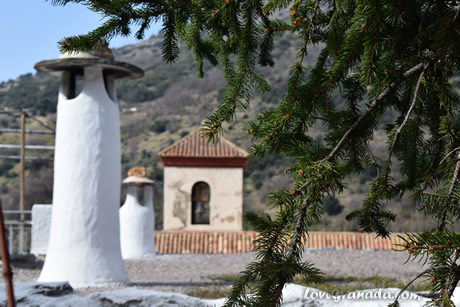
The Alpujarra is one of the most picturesque regions in the province of Granada situated in the foothills of the Sierra Nevada National Park.
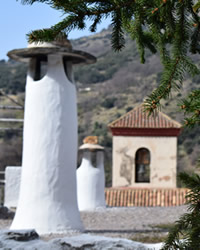
Enjoy a special day at the Alhambra with a guided tour
 Alhambra and Nasrid Palaces: discover the wonders of the Alhambra with this all-inclusive tour: the Nasrid Palaces, the Generalife, the Alcazaba, and more.
Alhambra and Nasrid Palaces: discover the wonders of the Alhambra with this all-inclusive tour: the Nasrid Palaces, the Generalife, the Alcazaba, and more.
 Alhambra + Albaicín + Sacromonte: a perfect combination of a guided tour of the Alhambra in the morning and a guided tour of the Albaicin and Sacromonte in the afternoon.
Alhambra + Albaicín + Sacromonte: a perfect combination of a guided tour of the Alhambra in the morning and a guided tour of the Albaicin and Sacromonte in the afternoon.The difficult access to this mountainous area has, until recently, contributed to the region's preservation of such scenic landscapes and architecture.
The Alpujarras (with 's') consist of two areas: the Alpujarra of Granada and the Alpujarra of Almeria.
The Alpujarras cover the area between Sierra Nevada and the sea stretching eastward towards the province of Almeria. To the west, it borders the Lujar mountains, and to the south, it nearly reaches the ocean.
The region of Alpujarra Granadina (of Granada) is simply referred to as 'the Alpujarra' (without 's'). On the map above, you can see the borders of the Alpujarra of Granada.
The Alpujarra is full of mountains and winding roads with stunning viewpoints. Its beautiful scenery, charming villages, and peaceful vibe make it a perfect destination. Once you arrive, you'll find it hard to say goodbye!
History of the Alpujarra
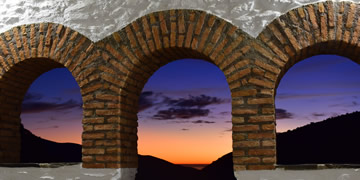 The unique history of Alpujarra includes the suppression of Moorish customs and language, rebellions, and internal disputes.
The unique history of Alpujarra includes the suppression of Moorish customs and language, rebellions, and internal disputes.
Gastronomy of the Alpujarra
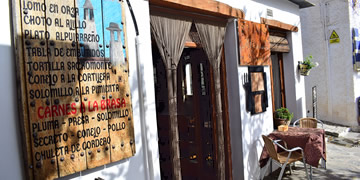 Where to eat and drink, typical dishes and cuisine of the Alpujarra, and discover the oldest traditional restaurants and bars.
Where to eat and drink, typical dishes and cuisine of the Alpujarra, and discover the oldest traditional restaurants and bars.
How to Reach the Alpujarra
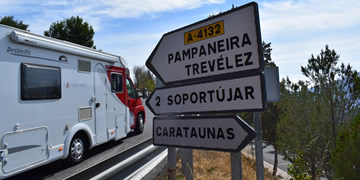 Access routes between Granada and the Alpujarra, how to get to the Alpujarra by bus or car, bus timetables, distances, and tips.
Access routes between Granada and the Alpujarra, how to get to the Alpujarra by bus or car, bus timetables, distances, and tips.
Villages of the Alpujarra
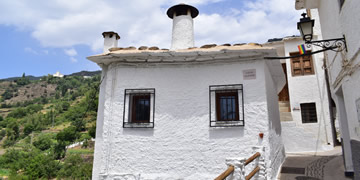 The most charming villages of the Alpujarra: whitewashed houses frozen in time, amid landscapes rich with centuries of history.
The most charming villages of the Alpujarra: whitewashed houses frozen in time, amid landscapes rich with centuries of history.
Village Pampaneira
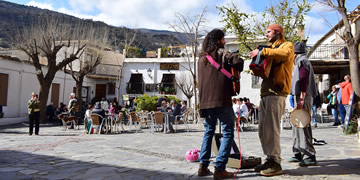 This picturesque village in Barranco de Poqueira preserves the signs of identity of this area and flourishes with a vibrant cultural life.
This picturesque village in Barranco de Poqueira preserves the signs of identity of this area and flourishes with a vibrant cultural life.
Village Soportujar
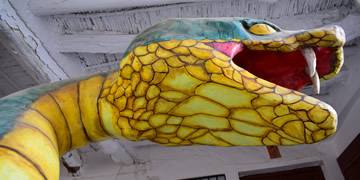 Explore the town filled with magic at every turn. Discover haunted spots, find out what to see, where to eat, and where to stay...
Explore the town filled with magic at every turn. Discover haunted spots, find out what to see, where to eat, and where to stay...Village Trevélez
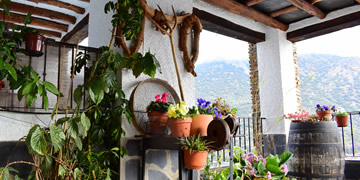 A picturesque village in the Alpujarra, one of the highest villages in Spain, famous for its cured hams and hiking trails.
A picturesque village in the Alpujarra, one of the highest villages in Spain, famous for its cured hams and hiking trails.Village Bubión
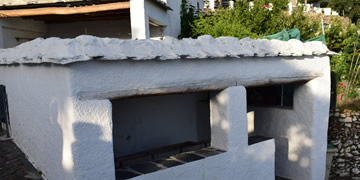 A beautiful white town nestled in the hillside of the Poqueira Ravine, distinguished by its traditional Berber architecture.
A beautiful white town nestled in the hillside of the Poqueira Ravine, distinguished by its traditional Berber architecture.Village Lanjarón
 Situated at the gateway to the Alpujarra, it is renowned for its prestigious spa, natural mineral water, and vibrant festivities.
Situated at the gateway to the Alpujarra, it is renowned for its prestigious spa, natural mineral water, and vibrant festivities.La Tahá and Pitres
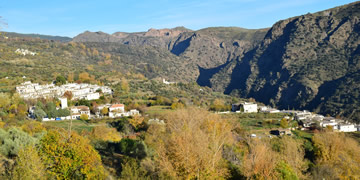 Beautiful municipality of La Taha has six small villages, perfect for those seeking peaceful surroundings away from crowds.
Beautiful municipality of La Taha has six small villages, perfect for those seeking peaceful surroundings away from crowds.
It's one of the most visited regions in the province of Granada, steeped in legend due to its rich history and remote location.
Useful Tips:
Today, it attracts visitors of all kinds, and during weekends and the vacation season, some touristy towns,
such as Pampaneira or Capileira, can become crowded. Therefore, if possible, it's better to visit on weekdays.
In the Alpujarra, the villages are adapted to their geography. Thus, we find houses perched on the mountainside, arranged in terraces one below the other and facing south, as the sunlight is highly appreciated at this altitude.
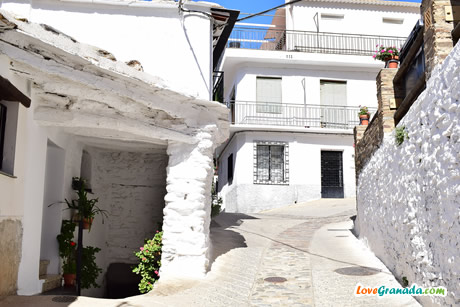 This type of traditional houses is mostly found in small villages, such as
Pampaneira or Bubión, where the streets are narrow and the houses are small.
This type of traditional houses is mostly found in small villages, such as
Pampaneira or Bubión, where the streets are narrow and the houses are small.
Many of them have been restored, respecting their old flavor while incorporating the comforts of modern life.
Architecture of the Alpujarra
Virtually untouched area since Arab rule, yet retaining the original Berber architecture unique to Spain.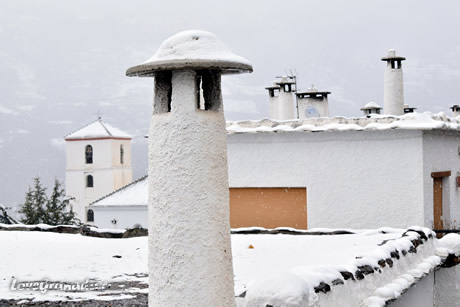 It was only in the late nineteenth century that artists, bohemians, and backpackers started to arrive
in this area.
It was only in the late nineteenth century that artists, bohemians, and backpackers started to arrive
in this area.
The picturesque buildings of the Alpujarra are one of the most typical features of its landscape.
Houses of the Alpujarras
Houses in the Alpujarra typically consist of two floors and are often whitewashed.Upstairs, you'll find the rooms, while the kitchen is located on the bottom floor along with areas for livestock and farm tools.
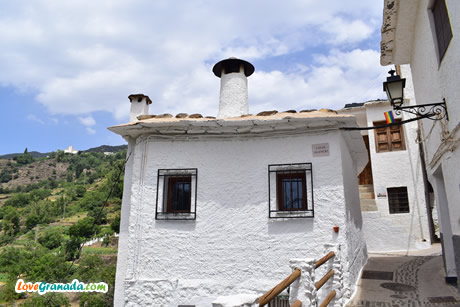 The houses feature a cubic shape with flat roofs, which is typical of areas with low rainfall, along with round chimneys.
The houses feature a cubic shape with flat roofs, which is typical of areas with low rainfall, along with round chimneys.
The roofing is made of magnesium clay, which is impermeable to rain, and is covered with stone.
These terrae, which now often serve as dryers, have a kind of hood, resembling almost a cylindrical fireplace, topped by a small slab.
In many cases, there are steps that bridge the gap between one house and the roof of another, effectively covering the street.
Useful Tips:
Some neighbors rent their houses out to tourists and visitors who want to enjoy the healthy
and quiet life of these mountain villages.
Make your experience in Granada even more complete and memorable
10 Best Caves and Venues for Flamenco in Granada: immerse yourself in the passion of flamenco and live unique experiences in the best tablaos in the city.
Authentic Arab Baths and Relaxing Massage: enjoy a deep relaxation experience with an exclusive massage in a traditional setting.
Traditional Celebrations and Fiestas of the Alpujarra
Moors and Christians
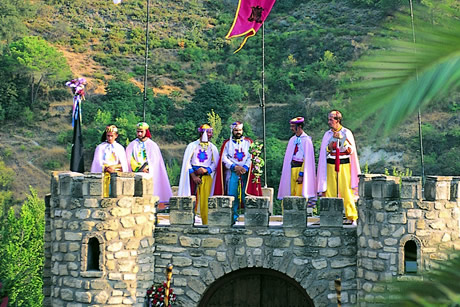 Among the traditions preserved in the Alpujarra are the popular festivals, including the Moors and Christians, symbolically
representing the clashes of the sixteenth century. The Moors and Christians Fiestas of Valor are the most renowned.
Among the traditions preserved in the Alpujarra are the popular festivals, including the Moors and Christians, symbolically
representing the clashes of the sixteenth century. The Moors and Christians Fiestas of Valor are the most renowned.
The Night of San Juan
The night of San Juan or the Night of the Water is celebrated in Lanjarón, a very special event in which many people, both locals and visitors, participate.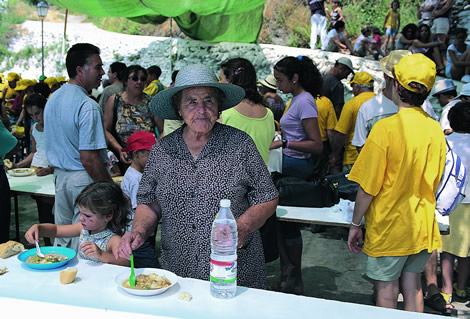 For an hour, the party in the streets of the village involves soaking each other with buckets,
water pistols, or whatever is available.
For an hour, the party in the streets of the village involves soaking each other with buckets,
water pistols, or whatever is available.
Water is also thrown from balconies to the delight of the participants.
The next day, the ham festival takes place, traditionally featuring a giant paella made in Salaillo Park, where locals enjoy tasting the local ham.
Traditional Music
As for the music, its folklore mainly revolves around guitars, bandurrias, and lutes.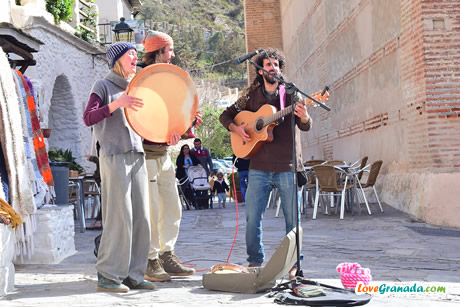 A special mention must be made of the 'troveros' (trouvere, medieval period songs). The trovo improvisation is organized into
stanzas of songs, with singers responding to each other.
A special mention must be made of the 'troveros' (trouvere, medieval period songs). The trovo improvisation is organized into
stanzas of songs, with singers responding to each other.
On the other hand, held annually since 1982, a different village every year hosts the Traditional Music Festival in the Alpujarra. This festival, which takes place on the second Sunday of August, which has helped preserve the traditional folklore of this land.
Chestnut Festival
During the All Saints' Day bridge in villages such as Capileira, Pampaneira and Cástaras, the popular Mauraca or chestnut festival takes place.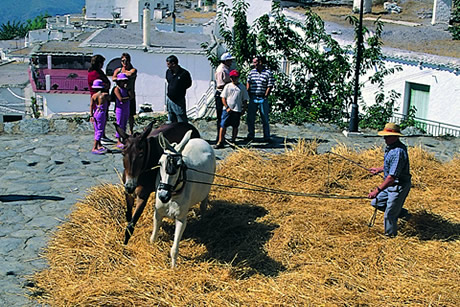 This ancient tradition, dating back to Roman times, gathers people around the bonfire to roast
chestnuts and enjoy them with brandy and music.
This ancient tradition, dating back to Roman times, gathers people around the bonfire to roast
chestnuts and enjoy them with brandy and music.
New Year's Eve... in August
Finally, it is worth mentioning the unique New Year's Eve celebration of Bérchules, which has been celebrated since 1994 on the first Saturday of August.This tradition arose due to a power outage in the village that year, depriving the neighbors of their New Year's Eve festivities.
Typical Handicrafts from the Alpujarras
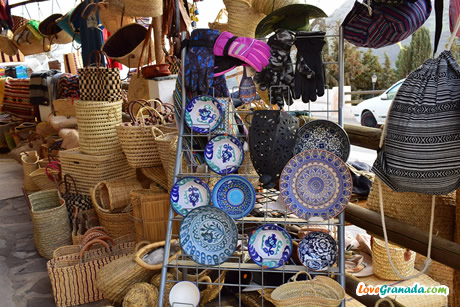 Craftsmanship in the Alpujarra is not only a cultural expression but also the result of the necessity of these villages,
which were sometimes isolated and had to be self-sufficient.
Craftsmanship in the Alpujarra is not only a cultural expression but also the result of the necessity of these villages,
which were sometimes isolated and had to be self-sufficient.
The most interesting handicraft demonstrations can be found in the weavings; silk workshops existed in the area in the past. Curtains, bedspreads and blankets are very popular among visitors.
Old clothes were shredded and mixed in the loom, thus creating beautiful colors.
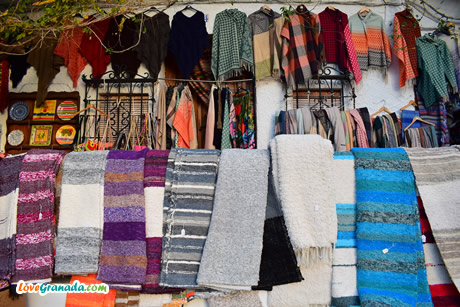 The pottery, of Nasrid origin, also has its own character in these highlands.
The pottery, of Nasrid origin, also has its own character in these highlands.
Lost Traditions
Although there are not many workshops with wood-fired ovens in the Alpujarra anymore, and it is not experiencing the revival seen with looms, for example.The handicraft of esparto grass or wicker is another tradition that is being lost, although you can still see some tourist stores selling these products.
Page Updated: Jul 29, 2025
Was this useful? Been to these sights? Share your thoughts!
© Copyright •
LoveGranada.com • Any use of the content, including copying of it in whole or in part is prohibited.
You Might Also Be Interested In
Opinions about Alpujarra Granada
Thoughtful service on a rainy day
Very good experience at the Teide restaurant. Today, after a walk from Pampaneira, we sat on the terrace. Since we were with the dog, we didn't dare go inside.
It was cold and raining, but the waitress Laura, very kind, lowered the terrace blinds and, noticing that we were still cold, offered us two blankets. She also served tapas outside of the kitchen hours. Service was excellent. We will definitely return.
Pepper
Absolutely beautiful. The air is so fresh. Beautiful views & the villages are kept with pride.
An impressive place
An impressive place, what beautiful villages! The scenery is majestic.The road is not so bad and we did the whole route un to Trevelez without problems. We bought some very pretty jars, apparently typical of the area.

